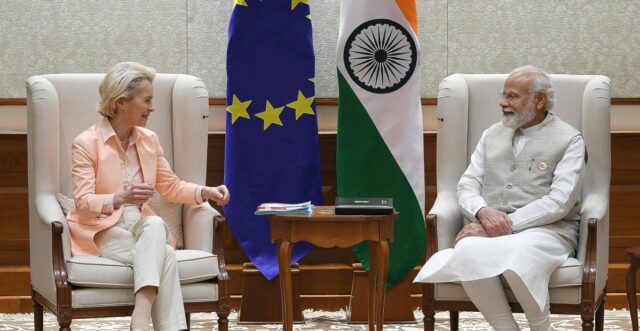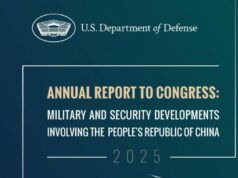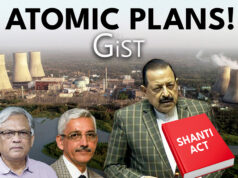
A significant milestone in EU-India ties. That what the European bloc called its strategic vision for enhancing cooperation with New Delhi. Coming against the backdrop of rising global tariff disputes and increasingly volatile supply chains, the EU’s new India strategy reflects a shift in Brussels’ posture.
The EU no longer views India as a marginal commercial player. Rather as a central axis for Europe’s future economic security, technological resilience and defence preparedness.
The timing is deliberate. Both sides are inching towards the final phase of the India-EU Free Trade Agreement (FTA) negotiations, with a deal expected by the year-end. Simultaneously, preparations are underway for the next India-EU Summit early next year. These developments are unfolding in a global environment where trade rules are being redefined, trust is fractured and alliances are being stress-tested.
Beyond the Tariff Battlefield
Europe’s recalibrated India strategy is not just a response to unresolved tariff battles, particularly over agriculture and industrial goods. Instead, it’s a move against growing exposure to China and supply chain disruptions. It reflects a deeper trend: derisking through diversification.
The newly released joint communication outlines a multi-pronged agenda spanning trade, digital regulation, defence, maritime cooperation, energy transition and multilateral coordination.
President Ursula von der Leyen framed it as a shift toward “partnerships rooted in shared interests and guided by common values,” highlighting India’s role in advancing joint priorities like clean energy, tech innovation and regional security.
Trade: Progress With Pressure Points
Tariff disputes on dairy, wine and industrial machinery continue to block final consensus. However, negotiators from both sides are under pressure to deliver. For the EU, securing access to India’s market is part of a larger push to break its overdependence on Chinese manufacturing. For India, an FTA with the EU is a way to expand export markets and attract investment in advanced industries.
The strategy stresses integration into digital and green value chains, offering India a more central role in the EU’s Trade and Technology Council (TTC) and supply chain resilience frameworks.
Defence, Indo-Pacific: From Talk to Coordination
What sets this vision apart is the elevation of defence cooperation. The EU is now actively seeking structured security frameworks with India, from maritime domain awareness in the Indo-Pacific to joint defence industrial initiatives. A potential Security of Information Agreement could allow for classified data sharing, a clear indicator that Europe sees India as a long-term strategic partner in a region increasingly defined by power contestation.
Joint action in cyber defence, counterterrorism, hybrid threats and crisis management is all part of the new chapter. The EU also expects closer Indian engagement on global hotspots, including the war in Ukraine and sanctions enforcement.
Technology, Innovation And Sustainability
With technology at the heart of global competition, the EU strategy seeks to pull India into deeper cooperation on emerging tech, digital governance and AI regulation. A proposed EU-India Startup Partnership and India’s possible association with the Horizon Europe R&D programme aim to unlock co-innovation potential.
In sustainability, the agenda prioritises green hydrogen, renewable capacity building and financing for India’s energy transition. These are not just climate goals; they are part of Europe’s broader strategy to develop alternate ecosystems outside of China.
This vision is part of a wider European playbook: derisk from China, hedge with India, anchor with the United States. With the U.S. shifting focus to its domestic agenda and China tightening its grip on strategic technologies and critical minerals, the EU is diversifying its dependencies. And India offers scale, stability and ambition.
India, too, is recalibrating. It seeks greater autonomy in global affairs. And closer ties with Europe give it economic and diplomatic options that aren’t entirely tethered to Washington or Beijing.
People, Mobility And Business
The EU wants to expand skilled migration and research exchange. A mobility framework and a proposed EU-India Business Forum aim to build more durable institutional and societal links, helping embed the partnership beyond government channels.
The Road Ahead
Adoption of EU Council Conclusions in October will be the next marker. But the real progress will be measured in the months that follow, on trade terms, defence alignment and joint initiatives that go beyond communiqués.
For now, the India-EU relationship is no longer just about trade preferences and diplomatic photo-ops. It’s being redefined by hard choices, global reordering and long-term strategic bets.




